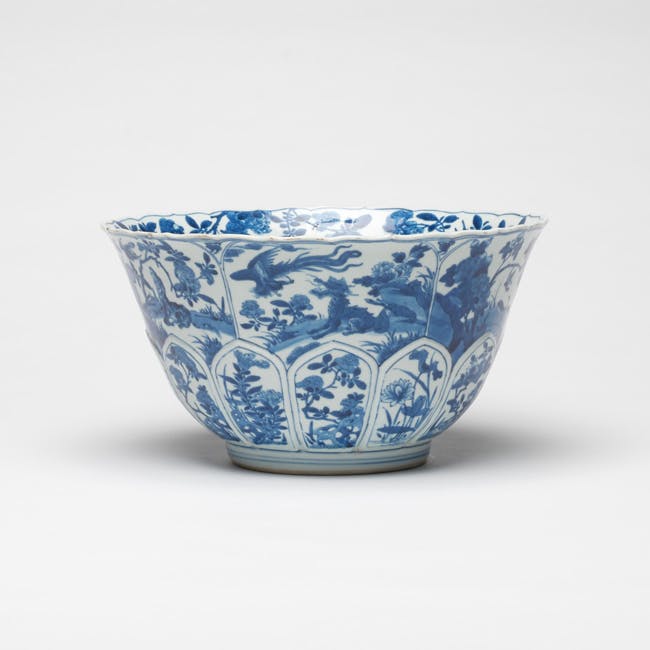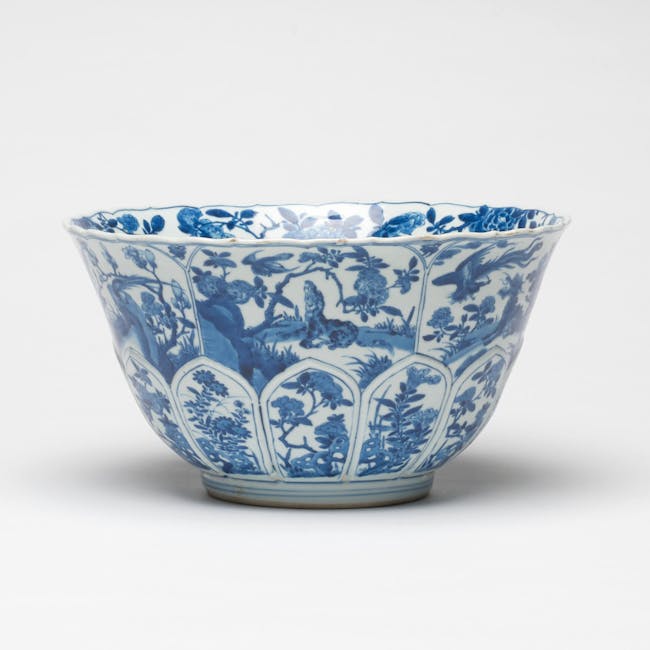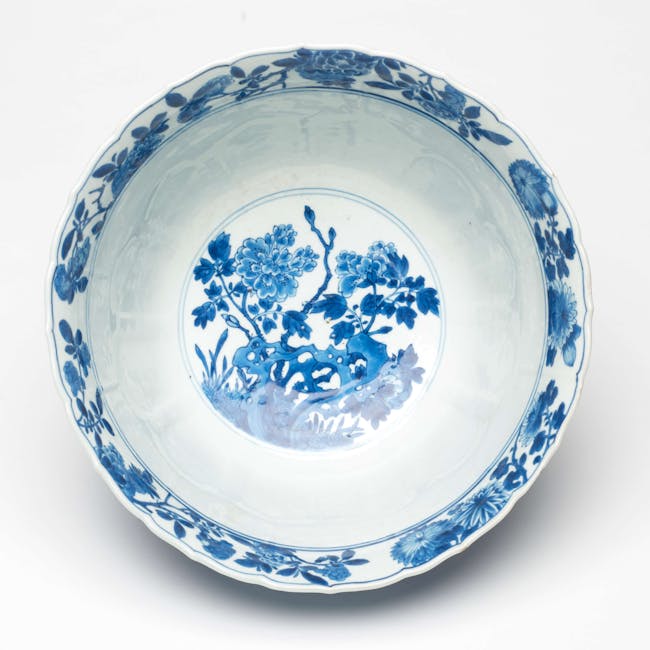The glorious tradition of Chinese blue and white porcelain is the story of a remarkable series of innovations. Although underglaze decoration on ceramics first appeared in the Tang Dynasty (618-907), this new decorative style was apparently abandoned in the intervening centuries until the Yuan Dynasty (1279-1368).
During the Song Dynasty (960-1279) the Chinese potters at the city of Jingdezhen developed a distinctive style, with a natural feeling for pleasing shapes and harmonious (carved) decoration. This, together with the rich resources of pure white porcelain clay and glaze material at Jingdezhen, provided the basis for the subsequent developments. By about 1300, ceramic technology had become perfected to a very high degree at the kilns of Jingdezhen, setting the stage for the introduction of a new and revolutionary decorative technique.
Cobalt in China
Cobalt blue, which is obtained by pulverising and oxidation of the mineral containing cobalt aluminate, is the principle ingredients used in painting blue and white porcelain. The first cobalt oxide for making blue and white was imported from Persia, probably from the Kashan area, during the early 14th century. A refined form of cobalt from Chinese sources was not perfected until circa 1520. The introduction of blue and white porcelain represents ‘the most revolutionary technical and decorative innovation of the Mongol regime in China, if not in the whole of Chinese ceramic history’ (M. Medley, 1969).
Underglaze blue decoration, is achieved by painting a suspension of cobalt pigment on a body of porcelain clay, which has been shaped and dried. After painting it is glazed and fired at about 1200-1300°C. This results in a blue decoration that contrasts sharply with the white ground of the porcelain. When the glaze, the cobalt-blue and the porcelain body have been fused together in the kiln, the decoration is immune to damage and deterioration. This explains the durability of the porcelains from China.
Large-scale production of good-quality blue and white began c. 1328 and became well established in Jingdezhen, Jiangsu Province. The oldest known (dated) blue-and-white porcelains are the David Vases, two temple vases inscribed and dated to 1351 (Percival David Foundation, London). The mastery of the blue-and-white decoration on these vessels indicates that the use of cobalt was well understood by this date. Between 1573 and 1661, during the last four imperial reigns of the Ming dynasty and the first of the Qing, a specific type of blue-and-white porcelain was produced to be exported to Europe; this is generally known as ‘kraak’ ware .
Artistic vitality was rekindled during what is termed the Transitional period (1620–83). With a lack of direction from the imperial kilns in Jingdezhen, which were destroyed during civil disturbances in 1673 and 1675, the decorators painted motifs taken from popular poetry, myth, history and paintings. The kilns at Jingdezhen were rebuilt in the 1680’s and the cobalt had become a clear and translucent blue, sometimes running to a bright violet under a thick glaze, which prompted the descriptive phrase ‘violets in milk’.
The following period - the Kangxi Dynasty (1662-1722) - is one of the most renowned periods for blue and white wares from China. The kilns produced for the home market as well as for export. In 18th century Europe there was a penchant for exotic luxury items and porcelain from China fit the bill perfectly. Increasingly larger amounts of porcelain were imported into the west, where they fetched large sums of money due to their rarity and beauty.






